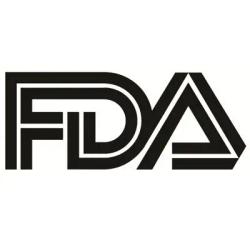
OR WAIT null SECS
Biphasic Anaphylaxis Rate Drops to 15.94% in Kingston Study
A Kingston study finds a 15.94% biphasic anaphylaxis rate, with recurrence at 19 hours, prompting concerns about extending emergency department observation.
A recent study reported a 15.94% rate of biphasic anaphylaxis in Kingston, Ontario, a slight drop from the 19.4% rate reported in the investigator’s previous 2007 study.1 The study also reported that the average time of a second biphasic reaction was 19 hours.
“However, it is relevant to recognize the lack of significant difference between the timing of recurrence between biphasic and non-anaphylactic biphasic events (19.0 vs 20.2 [hours]),” wrote investigators, led by Anne K. Ellis, MD, from Queen’s University, Kingston, Ontario, Canada.
Since 2007, there have been few updates on the etiology and risk factors of biphasic anaphylaxis. With a 2023 practice parameter update, defining biphasic reactions as the recurrence of a reaction or the development of new symptoms 48 hours after the resolution, investigators recognized the need to have new research on the incidence of biphasic anaphylaxis.2 Investigators aimed to describe the incidence and predictors of biphasic anaphylaxis in a single-center retrospective cohort from Kingston, Ontario.1
The study included 148 participants who had an emergency department admission at 2 hospital sites in Kingston between November 2015 and August 2017 and received a diagnosis of either “allergic reaction,” “anaphylaxis,” “drug allergy,” or “insect sting allergy.” An allergist determined if the patient met the criteria for anaphylaxis and categorized the reactions as uniphasic, biphasic, or non-anaphylactic biphasic.
Investigators examined 138 anaphylactic events, discovering 15.94% (n = 22) were biphasic reactions, 79% were uniphasic (n = 109), and 5.07% (n = 7) were a non-anaphylactic biphasic reaction. Common triggers were unknown antigens for biphasic events (41%), insect stings for non-anaphylactic biphasic events (43%), and food for uniphasic events.
The team observed no significant differences between biphasic non-anaphylactic biphasic, and uniphasic reactions for a history of anaphylaxis (P = .5528) or asthma (P = .7483), as well as time to onset or resolution of symptoms for first reactions (P = .09793 and P = .0677, respectively).
The average time of a second reaction was 19 hours in patients who had experienced biphasic reactivity. The mean time of a second reaction was similar among biphasic events vs non-anaphylactic biphasic events (19 hours vs 20.2 hours; P = .9585). The team found no correlation between time to resolution and recurrence time in biphasic events (P = .6755).
Those with biphasic anaphylaxis had significantly less severe second reactions (P = .0002) compared with the first reaction, with a reduction of wheezing, mouth or throat swelling, angioedema, lightheadedness or dizziness, hoarseness, and abdominal pain (P < .05). However, the second reaction of biphasic anaphylaxis was significantly more severe than non-anaphylactic biphasic events (P < .0001). First biphasic or uniphasic reactions were not significantly different from initial presenting symptoms (P > .9080), though biphasic reactions had more mouth or throat swelling (P < .05).
Investigators observed no differences in managing the reactions, noting a comparable mean number of drugs used, such as epinephrine, beta-agonists, histamine (H)1 and H2 antagonists, and corticosteroids. Most patients received 1 – 2 doses of epinephrine for their first reaction, although only 4 events of biphasic anaphylaxis were treated with this drug.
The number of medications used for the second biphasic reaction was significantly greater than for non-anaphylactic biphasic reactions (P = .0289). Nonetheless, second reactions were often treated with less medication than for the first reaction.
The study had no clear findings for the risk factors of developing biphasic anaphylactic reactions, only finding that biphasic reactions were linked to receiving epinephrine dose at the emergency department (odds ratio [OR], 3.72; 95% confidence interval [CI], 1.36 – 10.14). The study found 80% of patients experiencing a biphasic reaction had their first dose of epinephrine in the emergency department, and 31.6% needed a subsequent dose.
“The mean length of time between reactions in biphasic anaphylaxis, shown in this study to be 19.0 [hours], raises concerns about prolonging the monitoring period following primary reactions up to 10 [hours] compared to the current usual monitoring period between 4 and 8 [hours],” investigators wrote. “Extending observation periods can be difficult to achieve in busy [emergency departments] …and so alternative solutions should be considered, such as patient education, facilitating access to emergent medical care, and prescribing an epinephrine autoinjector at discharge.”
References
Ellis, A.K., Hossenbaccus, L., Linton, S. et al. Biphasic anaphylaxis in a Canadian tertiary care centre: an evaluation of incidence and risk factors from electronic health records and telephone interviews. Allergy Asthma Clin Immunol 21, 7 (2025). https://doi.org/10.1186/s13223-024-00919-2
Golden DBK, Wang J, Waserman S, Akin C, Campbell RL, Ellis AK, Greenhawt M, Lang DM, Ledford DK, Lieberman J, Oppenheimer J, Shaker MS, Wallace DV, Abrams EM, Bernstein JA, Chu DK, Horner CC, Rank MA, Stukus DR; Collaborators; Burrows AG, Cruickshank H; Workgroup Contributors; Golden DBK, Wang J, Akin C, Campbell RL, Ellis AK, Greenhawt M, Lang DM, Ledford DK, Lieberman J, Oppenheimer J, Shaker MS, Wallace DV, Waserman S; Joint Task Force on Practice Parameters Reviewers; Abrams EM, Bernstein JA, Chu DK, Ellis AK, Golden DBK, Greenhawt M, Horner CC, Ledford DK, Lieberman J, Rank MA, Shaker MS, Stukus DR, Wang J. Anaphylaxis: A 2023 practice parameter update. Ann Allergy Asthma Immunol. 2024 Feb;132(2):124-176. doi: 10.1016/j.anai.2023.09.015. Epub 2023 Dec 18. PMID: 38108678.


